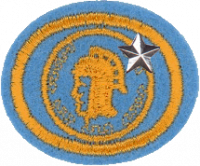AY Honors/Currency - Advanced/Answer Key 4
1
For tips and instruction see Currency.
European Union
In preparation for the arrival of the Euro on the continent on 1 January 2002, all Member States, bear an obligation to co-operate fully in the fight against currency counterfeiting. To reflect this, the EC has passed two Regulations – 1338/2001 and 1339/2001 (both passed on 28 June 2001) – each of which is intended to prevent counterfeiting of the new Euro notes and coins.
Regulation 1338 places obligations on those Member States which have adopted the Euro as their single currency; Regulation 1339 then extends these obligations to the other Member States. Article 6 of the former requires the Member States to implement “effective, proportionate and deterrent sanctions” on institutions which fail to withdraw and hand over counterfeit Euros to the country’s ‘Competent National Authorities’.
Individuals who fail to withdraw counterfeit Euros from circulation will be liable to up to two years in prison and those who fail to hand them in to the proper authorities could be fined.
Anti-counterfeiting measures
Banknotes
Many security features have been incorporated into the euro banknotes. They will help you to recognise a genuine banknote at a glance.
- The notes have raised print – a special printing processes give banknotes a unique feel.
- Look at the banknote against the light for a watermark, a security thread and the see-through number. All three features should be seen from the front and back of genuine banknotes.
- Tilt the banknote and on the front, you should see the shifting image on the hologram. On the back, you should see the glossy stripe (on the €5, €10 and €20 banknotes) or the colour-changing number (on the €50, €100, €200 and €500 banknotes).
Also see Security Features on Euro banknotes
Coins
Euro coins have machine-readable characteristics. They can be used in vending machines throughout the euro area - no matter where they were issued.
- A sophisticated bi-metal and sandwich technology have been incorporated into the €1 and €2 coins.
- The material of the 10, 20 and 50 cent coins is a unique alloy (Nordic gold), which is difficult to melt and used exclusively for coins.
Additionally there is lettering around the edge of the €2 coin and a unique metal composition is used for the 10, 20 and 50 cent coins to protect against counterfeiting.
Also see Security Features for Euro coins
4
- a. Level of expertise of members as demonstrated by presentations and dialogues.
- b. Average general age of attendees.
- c. Ideas which might help the club extend its collector interest to a wider audience.
- d. How newcomer friendly is the organization.
- e. Suggestions on how these people might be reached with the gospel through a manner which they would find attractive.
5
Requirements 7 & 8 reproduced below for simplicity
Requirement 7. Collect and mount a type set of coins from your country of any date
currently being minted or in circulation. Proof, commemorative, rare,
silver, or expensive coins are not needed. In your collection:
a. Possess at least one coin from each mint in the type set.
b. Locate and identify the mint mark (if any) on each coin.
c. Locate and identify the initials (if any) of each coin's designer(s).
Requirement 8. Do two of the following:
a. Make enlarged drawings of both sides of ten different denominations or
forms of coins for your country no longer in circulation.
b. Collect, identify, and mount 25 different foreign coins. No two coins alike.
c. Collect and mount a type set of coins from your country minted during the 20th Century.
d. Collect and mount a date set of series of coins for your country beginning
with your birth year. (Commemorative, gold, proof, expensive, or rare coins need not be included.)
6
Requirement 1 reproduced below for simplicity
Requirement 1. Relate briefly the story of barter, showing three reasons why money came into
being and naming at least ten strange forms of money used in place of coins or currency.
References


